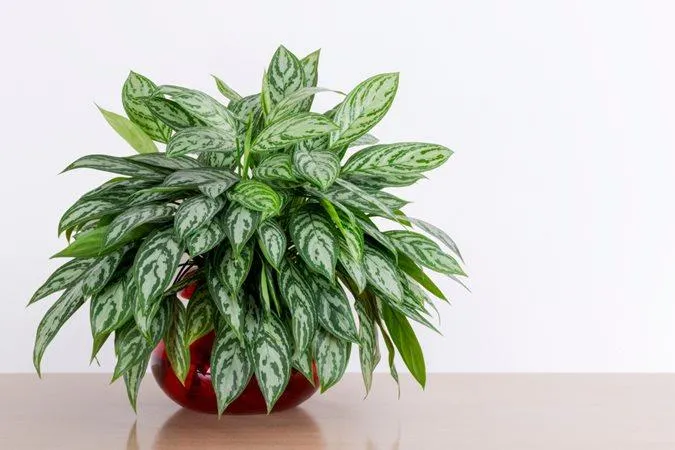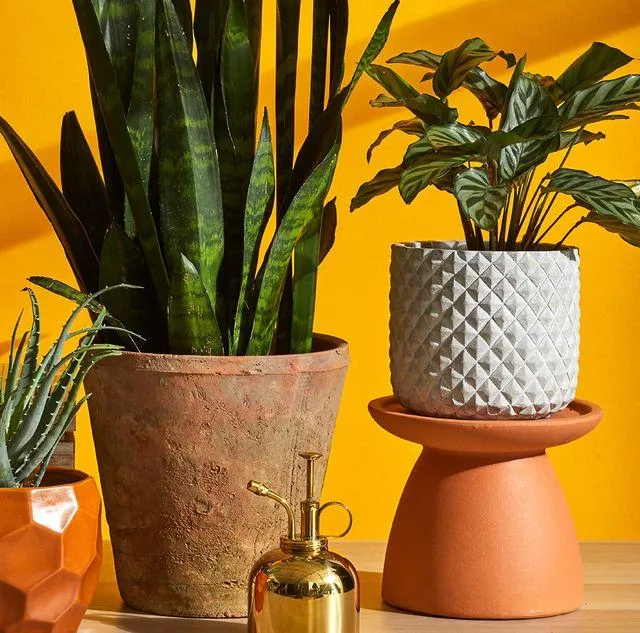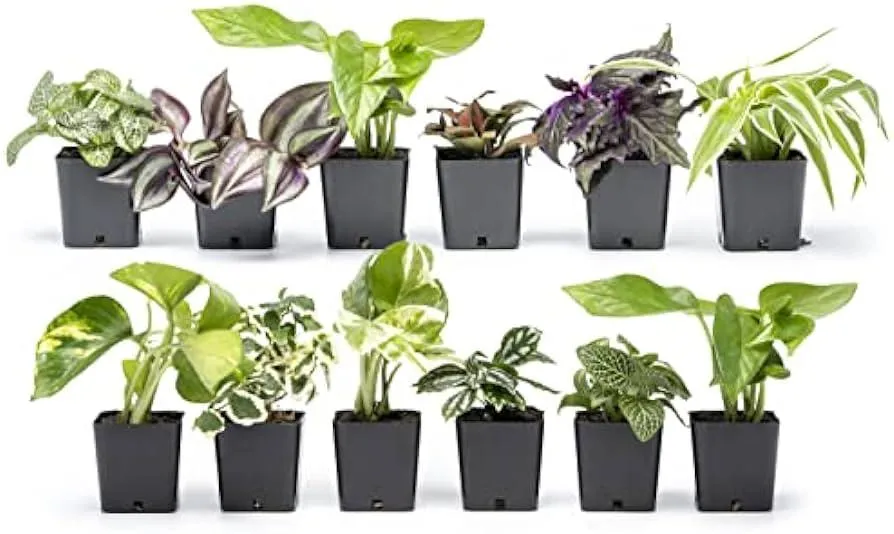Top Indoor Plant Picks to Green Up Your Living Space
With more time spent indoors lately, many of us are looking for ways to introduce some life and vibrancy into our living rooms. Indoor plants are a wonderful option to not only boost visual appeal but also improve air quality and overall well-being. In this article, I’ll share my choices for the best indoor plants for the living room based on over 15 years of experience as an indoor plant enthusiast and consultant.
English Ivy
- English Ivy (Hedera helix) is one of my top recommendations. It’s virtually indestructible and thrives in low to medium light conditions found in many living rooms. Ivy can trail beautifully over shelves and furniture or be trained up a moss pole for an eye-catching vertical display. From my experience, ivy is excellent at filtering out formaldehyde and benzene—two common indoor air pollutants. Just be sure to place it out of reach of pets, as all parts of the plant are mildly toxic if ingested.
- Spider Plant (Chlorophytum comosum) is another great option. Along with being extremely low maintenance, spider plants are superb at absorbing toxins like carbon monoxide and xylene from the air. I’ve found that their ability to produce plantlets or “spiderettes” at the end of every leaf is also very rewarding. Simply remove the plantlets, pot them up, and give as gifts to spread more green! Spider plants prefer medium to bright indirect light.
Snake Plant
- Snake plant, also known as Mother-in-Law’s Tongue (Sansevieria trifasciata), is near un-killable and filters out formaldehyde and toluene effectively. I’ve had snake plants survive weeks with little to no light or water! They thrive in low-light spots and prefer to be on the dry side between waterings. Snake plants come in various heights and leaf patterns, so you’re sure to find one to suit your space. Their architectural leaves add visual interest.
- Chinese Evergreen (Aglaonema) comes highly recommended as well. In my experience, they tolerate low light very well while pumping out lush green or variegated foliage. Chinese evergreens remove benzene, trichloroethylene, and formaldehyde from indoor air. Just ensure the soil remains evenly moist. They come in an array of leaf colors and shapes for a colorful pop.
Pothos or Philodendron
- Golden Pothos (Epipremnum aureum) and Heartleaf Philodendron (Philodendron hederaceum) are tough-as-nails climbers or trailers. I’ve found both to be prolific growers that thrive in low to medium light conditions. Their trailing vines can cascade beautifully over the edge of shelves and furniture. Pothos also does well in water, so it makes for an unusual tabletop planting alternative. Both Pothos and Philodendron are strong air purifiers and remove toxins like benzene, formaldehyde, and trichloroethylene from indoor environments.
- ZZ Plant (Zamioculcas zamiifolia) is another low maintenance superstar. It grows well in very low light and tolerates periods of dryness between waterings. ZZ plants add lush deep green foliage and textures to living spaces. Their waxy leaves also efficiently remove benzene, trichloroethylene, and xylene from indoor air. Their striking appearance makes them a conversation piece!
Peace Lily or Chinese Money Plant
- Peace Lily (Spathiphyllum) boasts gorgeous white blooms that emerge from its dark green leaves. However, in my experience, this plant is not as forgiving as others listed if its soil is allowed to dry out completely. It prefers medium to bright indirect light. On the other hand, its ability to filter out heavy metals, trichloroethylene, and benzene from indoor air makes it a rewarding companion. Just be sure not to overwater.
- Chinese Money Plant or Lucky Plant (Pilea peperomioides) has become a social media darling in recent years, and for good reason! From my experience, it flourishes best in medium to bright indirect light. Yet it tolerates low light well and doesn’t mind drying out a bit between waterings. Chinese Money Plants remove benzene, formaldehyde, trichloroethylene, and xylene from indoor air. Their crisp rounded leaves and compact shape make them eye-catching on a range of furniture and shelves.
Others to Consider
There are several other great low-maintenance indoor plants suitable for living rooms:
- Dracaena: Many Dracaena varieties like Janet Craig, Massangeana, and marginata filter indoor air while thriving in low light. Dracaenas come in a variety of heights and leaf patterns.
- Dieffenbachia: Often called Dumb Cane, Dieffenbachia adds bold green and white variegated leaves to living areas. It ranks among the best at removing benzene and formaldehyde from indoor air.
- Peperomia: This genus includes many low-light loving varieties like Peperomia caperata with its rippled leaves. All Peperomias boast good air-filtering abilities.
- Palms: Chameleon Plant (Hemigraphis alternata) forms a dense bush while dwarf Palms add architectural interest. Both prefer medium light and remove benzene and formaldehyde.
Whatever plants you choose, remember that all have care needs suited to their variety. underwatering is usually safer than overwatering. Rotate plants occasionally for even growth. And dust leaves to keep them photosynthesizing at their best!

With consideration for growing requirements and non-toxic companions, these top indoor plant picks will bring vibrancy, wellness benefits, and style to living areas for many years. Let me know if you have any other questions!
Best Indoor Plants for Living Rooms
| Plant | Light Needs | Water Needs | Size |
|---|---|---|---|
| Spider plant | Low | Allow soil to dry between waterings | Medium |
| Snake plant | Low | Allow soil to dry slightly between waterings | Tall |
| Philodendron | Medium | Water when top inch of soil is dry | Medium to Large |
| Chinese evergreen | Medium | Allow soil to dry slightly between waterings | Medium |
| Peace lily | Medium | Allow top inch of soil to dry out between waterings | Medium |
FAQ
-
What types of indoor plants are best for a living room?
Some popular choices include peace lilies, snake plants, pothos, spider plants and English ivy. These plants are very low maintenance and can survive with minimal light and water.
-
Should I put plants in direct sunlight?
Many indoor plants thrive in low or indirect light. Direct sunlight could scorch their leaves. However, some plants like succulents and snake plants don’t mind a sunny spot. You kind of have to know your plant’s needs.

-
How often should I water indoor plants?
Most houseplants need water when the top soil gets dry. It may be once a week or less, depending on your climate. Stick your finger in the soil to check the moisture level. Overwatering is worse than underwatering, so go slowly. Perhaps get a moisture meter for greater accuracy.
-
Is it hard to keep houseplants alive?
Not really. As long as you water appropriately and give them enough light, many plants are pretty low maintenance. The trick is choosing ones that match your care skills. Snake plants and pothos are basically foolproof. Obviously, orchids and fiddle leaf figs take more effort. Those might stump a novice plant parent.
-
Should I fertilize indoor plants?
Fertilizing during the growing season, roughly spring through fall, keeps plants healthy and looking their best. Follow label instructions for houseplant fertilizer. Some argue plants don’t really need it. But in my experience, fertilized plants seem to grow better. You be the judge!

-
How do I deal with pests on houseplants?
The most common indoor plant pests include spider mites, mealybugs and scale. Look for any tiny crawling bugs or white fluffy stuff. Neem oil or insecticidal soap usually does the trick. Isolate infected plants to stop the spread. You can also release ladybugs or pray mantises – they basically eat harmful bugs for you! Pretty amazing if you ask me.
-
What’s the easiest indoor plant?
In terms of low maintenance, I’d say pothos and snake plants are some of the most foolproof choices. Both tolerate low light and thrive on neglect. Spider plants are also nearly impossible to kill. English ivy is an old standby that hangs in there despite abuse. All of those are tough as nails, so maybe start there if you have a brown thumb!
At the same time, don’t be afraid to try some less hardy plants if the care instructions seem manageable. Experts swear Chinese evergreens and ZZ plants are basically unkillable too. Perhaps give those a shot before moving to fickle ferns or orchids. Or consult a plant pro at your local garden center for customized advice. With some trial and error, you’ll be growing green thumbs in no time!

